
Features
Structural
Training
Back to Basics: Hose line advancement tips
In September, we looked at the importance of the backup person on the hose line when advancing a hose line into a structure. Hose-line advancement is an important part of our fire ground operations.
November 14, 2008
By Mark van der Feyst
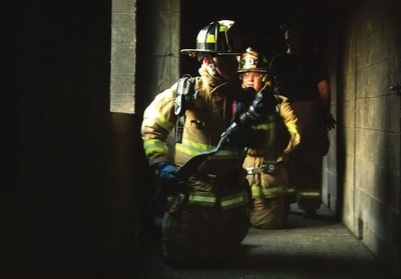 |
|
|
Photo 1 – Photo by Mike Gutschon
|
In September, we looked at the importance of the backup person on the hose line when advancing a hose line into a structure. Hose-line advancement is an important part of our fire ground operations. Without it, we are unable to conduct interior operations. There is a saying in the fire service with regard to hose advancement: “As the first line goes, so goes the fire!” This means that if we are able to advance the initial hose line correctly and efficiently from the beginning, then the fire will follow suit. If we advance our initial hose line incorrectly and mess up the operation from the start, the fire will quickly go downhill. Part of hose advancement is knowing how to advance the hose from the nozzle man’s position. We often incorrectly advance hose from this position. Let’s take a look at two methods of advancing a hose line from the nozzle man’s position.
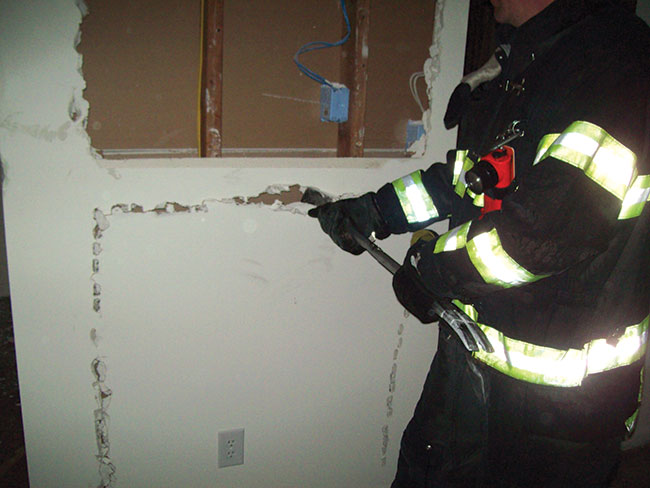 |
|
|
Photo 2 – Photo by Mike Gutschon
|
|
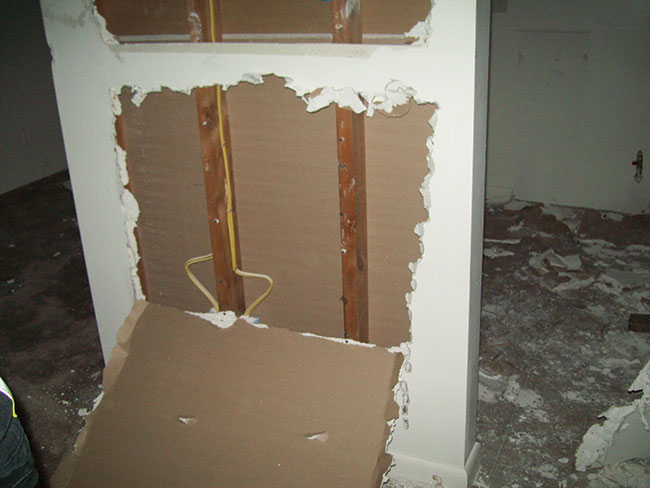 |
|
| Photo 3 – Photo by Mike Gutschon Advertisement
|
|
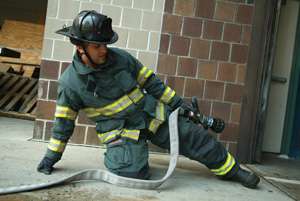 |
|
|
Photo 4 – Photo by Mike Gutschon
|
|
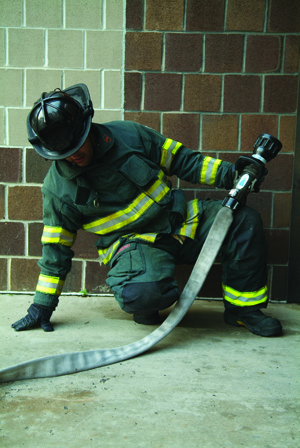 |
|
|
Photo 5 – Photo by Mike Gutschon
|
In our basic training, we were taught to advance a hose line from the kneeling position, with both knees on the ground (see photo 1). We have always shown recruit firefighters that this is the way to advance hose. I have witnessed this time and time again, even during live fire training – every person on the hose line is on his knees, crawling along trying to advance a hose line. Is this efficient and practical? No. In fact, it slows the hose-line advancement and creates more work for the team. So, why do we do this? I believe we teach this method because we tend to connect hose-line advancement with search. We teach our recruit firefighters to search on their hands and knees, which is also inefficient and sometimes useless. This hands-and-knees method is ingrained into their heads and so we teach the same method for hose advancement. (We will look at proper search techniques in a future issue.) We also teach this method because there are certain safety elements to it – if we are on our knees, we are low to the ground and below the heat. As nice as this sounds, it results in an unsafe practice.
Advancing a hose line as in photo 1 will lead to certain doom. How many times have we read of firefighters falling through floors while advancing a hose line? This year in Ohio two firefighters died while advancing a hose line inside a residential structure. Crawling on your knees can cause you to blindly come upon holes in the floor or open stairs. When you encounter these openings, it will be too late and you will fall through. It happened with one of my recruits in a burn tower during live fire training; the recruit fell down a set of stairs because he lost his balance while on his knees. When he came upon the set of stairs, he fell straight down to the bottom. I categorize this crawling-on-your-knees business as the penguin walk. Penguins walk upright with little movement of their feet. They fall over easily because they are top heavy. We, too, are top heavy when we crawl on our knees. Look at photo 1 again. If this firefighter were to come upon a hole in the floor he would fall through because his body is top heavy. Remember, we are wearing full SCBA on our backs; we have equipment in our hands and in our pockets, helmets on our heads, a radio in our upper pocket, a flashlight; and we are wearing a face piece. All of this equipment adds to the weight of our upper body. The firefighter in the photo would have no chance of recovery.
How can we avoid this? We can advance our hose lines using a different method – by having our one leg out in front (see photo 2). Doing this allows the firefighter to advance the hose line a lot faster and with ease. Notice the distance that is covered by advancing in this fashion. When advancing a line on both knees, our span is limited. When we have one leg out in front, we are able to feel the floor in front of us. This provides an early warning system for holes in the floor or open stairs. We can also recover and prevent ourselves from falling in. Look at photo 4. The firefighter is able to fall back and avoid falling into a hole. This is accomplished because his upper body weight is resting mostly on the back leg.
Another advantage of advancing a hose line in this fashion is the ability to absorb the nozzle reaction. If you were alone on the nozzle and your back-up man was a little ways away (because he was helping to bring in more hose around corners for you) you would be able to handle the nozzle reaction better. In the September article on nozzle management we discussed the proper way to manage the nozzle. This position forces you to hold the nozzle correctly and not on your hip. Crawling on your knees allows you to hold the nozzle in the wrong position, on your hip.
Using the leg-in-front technique also allows to you to be more aware of your surroundings. When you are crawling on your knees, you see only what is in front of you. If you are on your hands and knees, it is even more difficult to see what is going on around you. In the position in photo 2, you can see what is going on around you and you have more mobility, allowing you to observe more.
I watched a student at a training exercise in September at a live fire class. The student was crawling on his knees to advance the hose line. His partner was anxious to get the hose fed to him and was actually pushing him over as he pushed the hose toward him. Because the first firefighter was on his knees, he was thrown off balance from behind by his own man. This can be avoided by advancing the hose line as in photo 2.
Another way to advance the hose line is seen in photo 3. Instead of having one leg out in front, we can duck walk. The same objectives can be accomplished as in photo 2. We can cover a great distance because our span will be greater than if we were crawling on our knees. Our upper body weight is also resting on the back leg. If we come across any openings in the floor we can recover and avoid falling through. Look at photo 5. This positional stance of advancement will aid you in setting yourself up to employ the tactics of nozzle management.
Using the hose line to “feel” the floors or walls in front of you can be beneficial. This tactic can be life saving. I know of a firefighter in Ohio who used the hose line to “feel” the floor in front of the team and discovered that there was a hole in the floor. Sweeping the nozzle stream across the floor in front of us helps us feel if there is any floor in front. It will also help to cool the floor as you advance into the structure. Burning material that falls to the ground from the ceiling can burn your knees. Sweeping the floor will cool it and make things easier for you in the long run. We can also use the nozzle stream to “feel” the walls for windows or any other openings – this is a great way extend our reach!
What has been described here will only work if you practise and train in these techniques. By doing so, you will master the skills and it will become an instinctive manoeuvre to execute.
Mark van der Feyst began his career in the fire service in 1998 with the Cranberry Township Volunteer Fire Company, Station 21, in Pennsylvania. He served as a firefighter and training officer for four years, then joined the Mississauga Fire & Emergency Services, where he served for three years as a firefighter and shift medical instructor. He is now the training division captain for the City of Woodstock Fire Department in Ontario.
Print this page